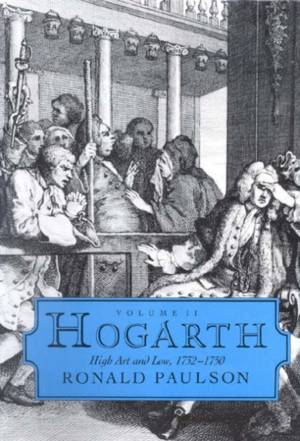
- Retrait gratuit dans votre magasin Club
- 7.000.000 titres dans notre catalogue
- Payer en toute sécurité
- Toujours un magasin près de chez vous
- Retrait gratuit dans votre magasin Club
- 7.000.000 titres dans notre catalogue
- Payer en toute sécurité
- Toujours un magasin près de chez vous
77,45 €
+ 154 points
Format
Description
The second volume in Paulson's definitive study of William Hogarth explores the peak of the artist's career, from A Harlot's Progress to The March of Finchley, and concentrates particularly on the production and consumption of his works. It plays out Hogarth's conflicting aims of producing a polite or popular art, for patrons or for the general public. It is also concerned with the central issue of Hogarth as painter and engraver. Hogarth recognised that the art market was changing. Personal patronage was declining, art works were being commercialised, and a huge new market was opening up. From his earliest professional training Hogarth had witnessed and participated in the employment of mechanical reproduction - printing and engraving - to create and extend cultural markets. The enterprising Hogarth set out to develop a new product corresponding to the expanding audience, especially appealing to those who wanted to maintain their own identity and not merely to emulate the upper class. Prints could now be seen in coffee houses and shop windows, therefore reaching an audience far beyond their owners. Art was no longer limited to the simple status of personal possession - this put in question the whole matter of property as it did of class. Hogarth's interests extended straight down from the dukes and princesses of his conversation pictures to the lowest denizens of the London underworld. Although he makes clear in his graphic works that his sympathies lay with the 'nobodies', at the same time his pictures, with their learned allusions and visual and verbal puns, also address themselves to an educated audience. He was at once both inside and outside the system. Volume II also focuses on Hogarth's relationship to the emergent literary form - the novels of Samuel Richardson and Henry Fielding. Without Hogarth's graphic experiments of the 1730s, Richardson and Fielding would have written very differently
Spécifications
Parties prenantes
- Auteur(s) :
- Editeur:
Contenu
- Nombre de pages :
- 508
- Langue:
- Anglais
Caractéristiques
- EAN:
- 9780718828554
- Date de parution :
- 06-01-92
- Format:
- Livre relié
- Format numérique:
- Genaaid
- Dimensions :
- 152 mm x 228 mm
- Poids :
- 254 g







